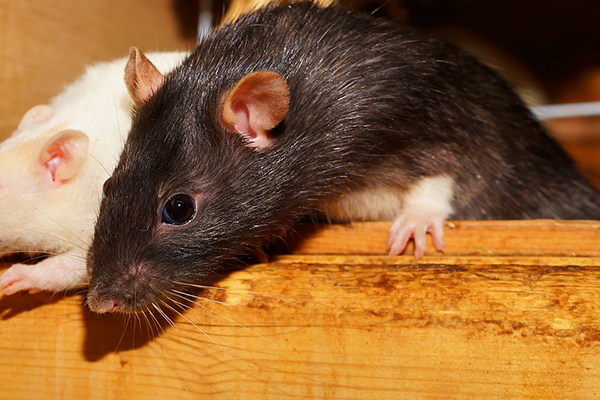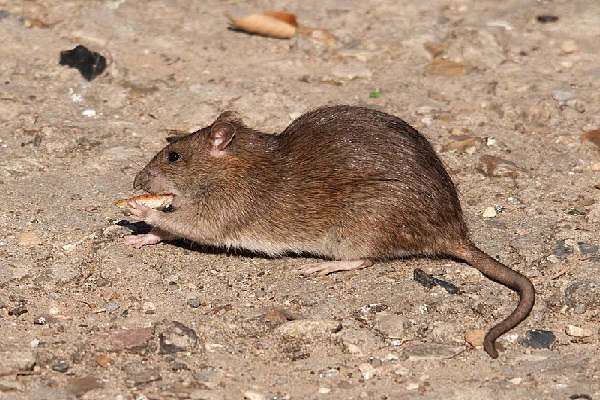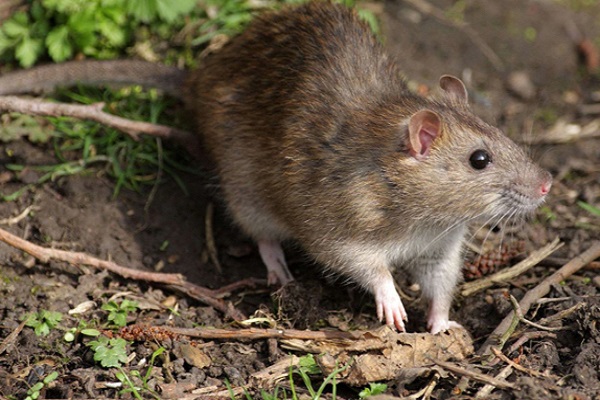
Rodents are one of the most successful and diverse groups of mammals, comprising approximately 40% of all mammalian species. From tiny house mice to enormous capybaras, rodents have adapted to a wide range of environments and lifestyles, making them ubiquitous across the globe. But where did these fascinating creatures come from, and how did they evolve into the diverse array of species we know today? In this article, we will explore where did rodents originate, and how they adapted in order to survive.
The brown rat, also known as the common rat, is one of the most well-known and widespread rodent species, found on every continent except Antarctica. Similarly, the wild rat, also known as the black rat, is found in many parts of the world, often living in close association with humans. Finally, the Norway rat, also known as the brown Norway rat or the sewer rat, is a highly adaptable species that have colonized almost every corner of the globe. Together, these three species provide a fascinating glimpse into the evolution and diversification of rodents.

Classification
Classification is a system that categorizes and organizes living things based on their characteristics and evolutionary relationships. In the case of rodents, they are classified within the order Rodentia, which includes over 2,000 species. Within this rodent genera, there are several families, including, voles, lemmings, gerbils, hamsters, squirrels, chipmunks, prairie dogs, beavers, porcupines, chinchillas, marmots, muskrats, groundhogs, pikas, and deer mice; with the family Muridae being the largest and most diverse. Muridae includes many rat species, including brown rats, wild rats, and Rattus norvegicus, also known as the Norway rat.
The brown rat, wild rat, and Norway rat all belong to the genus Rattus, which is a group of more than 60 species of rats. Rattus is part of the subfamily Murinae, which includes over 500 species of mice and rats. Within Rattus, there are many different species, each with its own unique characteristics and adaptations. For example, the brown rat, Rattus norvegicus, is known for its large size and broad distribution, while the wild rat, Rattus rattus, is known for its agility and climbing abilities.
Understanding the classification of rat species can help us better understand their evolutionary relationships and the characteristics that make them unique. By studying the different species of rats and their relationships, we can gain insights into their biology, behavior, and ecology, which can help us develop strategies for controlling and managing rodent populations.

Evolutionary History of Rodents
The evolutionary history of rodents dates back to the Paleocene Epoch, over 60 million years ago, when the first rodent-like mammals appeared on Earth. These early rodents were small, mouse-like creatures that lived in forested environments and fed on seeds and insects. Over time, rodents diversified and evolved into a wide range of species, adapting to a variety of ecological niches and lifestyles.
One of the most well-known rodent species, the black rat, has a long and complex evolutionary history. Black rats likely originated in Asia and then spread to Europe and Africa through trade and travel. In some parts of the world, black rats have become invasive species that can cause damage to crops and spread disease. Despite their reputation as pests, black rats are also an important part of many ecosystems and play a crucial role in seed dispersal and nutrient cycling.
In addition to black rats, humans have also played a significant role in the evolution and distribution of other rat species, such as city rats and laboratory rats. City rats, also known as urban rats, have adapted to living in human-made environments and are found in cities all over the world. Laboratory rat, on the other hand, has been selectively bred for research purposes and are used extensively in scientific studies. Understanding the evolutionary history of rodents can help us better appreciate their diversity and importance in the natural world, as well as develop more effective strategies for controlling and managing rodent populations.

How Rodents Adapted to Survive
Rodents are incredibly adaptable animals that have evolved a range of strategies to survive in diverse environments around the world. One of the most successful species, the Norway rat, has a number of adaptations that allow it to thrive in urban and suburban environments. For example, Norway rats have powerful jaws and teeth that enable them to gnaw through tough materials like concrete and wood, allowing them to access food and shelter. They are also excellent swimmers and can climb, which helps them to navigate through complex environments.
Other species of rats, such as black and brown rats, have also evolved unique adaptations that allow them to survive in a variety of environments. For example, black rats are agile climbers and are able to scale walls and trees to access food and shelter. Brown rats, on the other hand, have a more sedentary lifestyle and are able to survive on a diet of scraps and refuse.
Another species, the roof rat, has evolved to live in trees and high places, such as attics and rooftops. This rat species is native to Southeast Asia, where it is known as the bamboo rat, and has spread to many parts of the world, including North America, where it is considered an invasive species. Roof rats have long, slender bodies and excellent balance, which allows them to move easily through trees and climb to high places.
Overall, rodents have adapted to survive in a range of environments through a combination of physical, behavioral, and ecological adaptations. Their incredible diversity and adaptability make them fascinating and important creatures to study and understand.

Role of Rodents in the Ecosystem
Rodents play a vital role in ecosystems around the world, serving as prey for many predators and contributing to nutrient cycling and seed dispersal. In many ecosystems, rat populations are a key component of the food chain, providing food for birds of prey, snakes, and other carnivores. Rodents are also important seed dispersers, helping to spread plant species and promote ecosystem diversity.
In addition to their ecological roles, rodents also have significant impacts on human health and well-being. Female rats, for example, are prolific breeders and can produce several litters per year, leading to population explosions in some areas. This can result in increased competition for resources and damage to crops and infrastructure. Furthermore, rats and other rodents can spread diseases, such as Hantavirus and Leptospirosis, to humans and other animals, making them a significant public health concern in some regions.
Despite the potential risks associated with wild rat populations, many people keep pet rats as companions. Pet rats are social, intelligent animals that can form close bonds with their human caretakers. Keeping pet rats can also provide educational and therapeutic benefits, helping to teach children about responsibility and empathy and providing comfort to people with mental health issues.

Diversity of Rodent Species
Rodents are a diverse group of mammals that includes many species, from tiny mice to larger species like rats and guinea pigs. One of the most fascinating aspects of rodent diversity is the wide range of adaptations and specializations that have evolved in different species. For example, some rodents are specialized for burrowing, while others are adapted for climbing or swimming.
In addition to their diverse physical characteristics, rodents also exhibit a wide range of behaviors and social structures. Some species, like albino rats, are commonly kept as pets and are known for their social behavior and affectionate personalities. Other species, like wild rats, are more solitary and may have complex social hierarchies within their populations.
The diversity of rodent species is a reflection of their evolutionary success and their ability to adapt to a wide range of ecological niches. From the deserts of North Africa to the rainforests of South America, rodents can be found in nearly every habitat on Earth, making them an important component of many ecosystems. By studying the diversity of rat populations and other rodents, scientists can gain insights into the evolution and ecology of these fascinating animals.
Impact of Humans on Rodent Populations
Humans have had a significant impact on rodent populations around the world, both directly and indirectly. One way that humans have influenced rodent populations is through the use of lab rats, which have been selectively bred and studied for many decades in order to gain insights into human physiology and disease. These rats are kept in controlled environments and provide valuable data for medical research, but their use has also led to concerns about animal welfare and the potential for negative impacts on wild rat populations.
Another way that humans have affected rodent populations is through habitat destruction and fragmentation. As humans continue to expand into natural areas, many mammal species, including rats and other rodents, are losing their habitats and facing increased competition for resources. This can lead to changes in rat population dynamics, including increased aggression and territoriality.
Finally, humans have also had an impact on rat populations through the spread of diseases. Rats and other rodents can carry a range of diseases that can be transmitted to humans, including Hantavirus, Leptospirosis, and Salmonella. These diseases can be spread through contact with rat feces or urine, making them a public health concern in many parts of the world.
Need Help With Wildlife On Your Property?
If you’re dealing with unwanted wildlife on your property, look no further than AAAC Wildlife Removal Services. Our team of experts is trained to safely and effectively remove a wide range of animals, including many rat species. We understand the unique behavior and ecology of rats and can provide customized solutions to meet your specific needs.
Not only can rats live in and around your home, but they can also pose a health risk by spreading diseases. Our team takes the safety of you and your family seriously and will work to ensure that your property is free from unwanted wildlife. Contact us today to learn more about our wildlife removal services and how we can help you protect your home and property.
Final Thoughts
Thanks for reading this article on rodents! We hope that you found it informative and engaging. Rodents are truly fascinating creatures that have a lot to teach us about the natural world. Whether you’re interested in their evolutionary history, their diverse adaptations, or their ecological roles, there’s always more to learn about these amazing mammals.
At the same time, we know that dealing with rodent infestations or unwanted wildlife on your property can be a real challenge. That’s why we want to remind you that AAAC Wildlife Removal Services is here to help. Our team of experts is dedicated to providing safe, effective, and humane solutions to wildlife problems, including rats, mice, and other rodents.
So if you’re facing a wildlife issue, don’t hesitate to reach out to us. We’re always happy to answer your questions, provide advice, or schedule a consultation to assess your situation. Thanks again for reading, and we look forward to helping you protect your home and property from unwanted wildlife!







